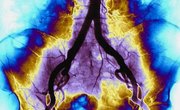Of all of the possible professions in the United States, physicians endure the most training and the highest pay. The Bureau of Labor Statistics estimates that 630,000 surgeons and physicians worked in the field in 2006, and 15 percent of them held positions in private practice. Doctors, like other professionals in the medical field, are in demand, especially in low-income areas. Also, job growth will continue because of the number of physicians retiring between now and 2016, according to labor statistics.
Surgeon's Function
Surgeons are doctors who specialize in the diagnosis and treatment of patients through operation procedures. They are responsible for a patient's care before, during and after surgery. Generally, surgeons are required to possess extensive knowledge in the areas of anatomy, emergency and intensive care, immunology and wound healing. In addition, surgeons perform other duties such as examinations, test interpretation and counseling. The American Board of Surgeons tests and certifies individuals in general surgery
Pay for Surgeons
A survey taken by the Medical Group Management Association in 2005 found that the starting annual salary for a general surgeon with less than one year of experience was $282,000. According to Payscale.com, a neurosurgeon's average yearly salary in 2009 is at least $300,000. Education equates higher pay in the surgery area. For example, orthopaedic surgeons spend at least 14 years in undergraduate, medical school and residency training. Every 10 years, these surgeons are recertified in the field.
Early Preparation
Because of the competitive nature of medical school, preparation to become a surgeon begins in high school. During the junior and senior years, students are encouraged to take higher level math, science and English courses. Following high school graduation and being accepted into a university, students begin work on their pre-med coursework. As juniors, they prepare to take the Medical College Admissions Test. Application is made to medical school. After earning an undergraduate degree, medical school follows.
Route to M.D.
During the first two years of medical school students engage in basic pre-practice science curriculum. The last two years are considered the clinical years. While clinicals vary by school, clinical rotations include internal medicine, obstetrics and gynecology, pediatrics, surgery, psychiatry and family medicine. Clinicals are supervised by practicing physicians. After completing medical school, future surgeons begin a five-year residency. Specializations require a longer residency. Afterward, residents must take a licensing exam in the state they plan to practice.
Specialize or Not?
There are 14 areas of specialized surgery. Some of them include cardiothoracic, gynecologic oncology, ophthalmic (eye), neurology, colon and rectal, pediatric, otorhinolaryngology (ear, nose and throat), plastic and maxillofacial. One of the most common areas of specialty is orthopaedic surgery (bones and joints). According to the American Academy of Orthopaedic Surgeons, orthopaedic surgeons diagnosis, treat, prevent and rehabilitate individuals afflicted with injuries, disorders and diseases of the body's musculoskeletal system. Within the specialty are concentration areas, such as sports medicine.
Related Articles
References
Writer Bio
Tonya Whitaker has worked as a professional journalist and copy editor since 1998. She has written columns and features for "The Huntsville Item" and "North Dallas Gazette." Whitaker earned a Bachelor of Science in sociology from Lamar University in Beaumont, Texas, and is pursuing a Master of Arts in English from Texas Woman's University in Denton, Texas.









